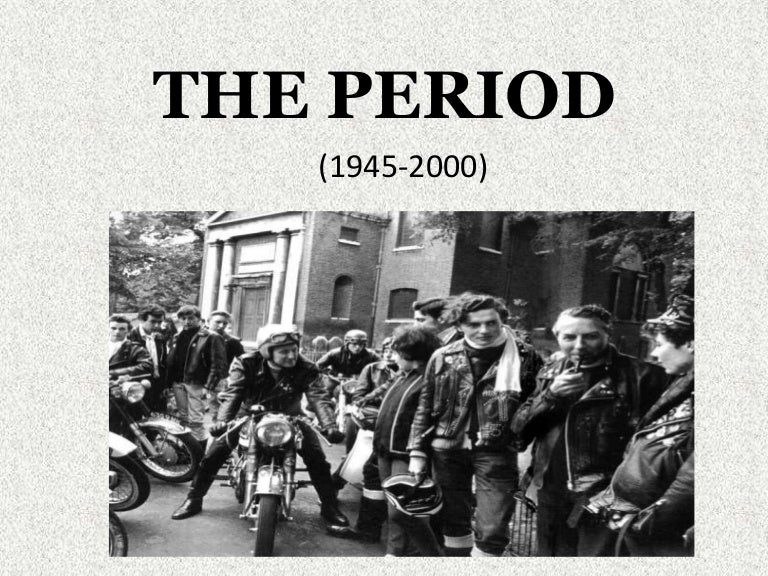Kitchen Sink Realism is a term used to describe a style of British film and television that emerged in the 1950s and 1960s. It is characterized by its focus on everyday, working-class life and its gritty, realistic portrayal of social issues. The term "kitchen sink" refers to the inclusion of mundane, domestic objects and situations in these works, giving them a sense of authenticity and relatability.What is Kitchen Sink Realism?
The term kitchen sink realism was coined by cultural critic David Sylvester in 1954 to describe a new trend in British art and literature. It was used to describe works that depicted the harsh realities of post-war British society, often focusing on the struggles of the working-class. This movement rejected the romanticism and idealism of previous artistic movements, instead opting for a more raw and unflinching portrayal of everyday life.Exploring the Meaning of Kitchen Sink Realism
Kitchen Sink Realism emerged in the 1950s, a time of great social and political change in Britain. The country was still recovering from the devastation of World War II and there was a growing divide between the wealthy and the working-class. This movement was a reaction to the dominant middle-class culture of the time and aimed to give voice to the struggles and experiences of the working-class.The Origins and Evolution of Kitchen Sink Realism
Kitchen Sink Realism was heavily influenced by the social and political climate of post-war Britain. The movement reflected the growing disillusionment with traditional societal structures and the desire for change. Many of these films and television shows dealt with issues such as poverty, unemployment, and class divisions, shining a light on the harsh realities faced by the working-class.Understanding the Social and Political Context of Kitchen Sink Realism
Kitchen Sink Realism had a significant impact on British cinema, challenging traditional storytelling techniques and pushing the boundaries of what was considered acceptable on screen. These films often featured non-professional actors and were shot on location rather than in studios, giving them a sense of authenticity and immediacy. This movement paved the way for more socially conscious and politically charged films to be made in Britain.The Impact of Kitchen Sink Realism on British Cinema
There are several key characteristics that define Kitchen Sink Realism. These include a focus on working-class life, a realistic and unflinching portrayal of social issues, the use of non-professional actors, and a rejection of traditional storytelling techniques. These works also often feature a sense of hopelessness and despair, reflecting the struggles and hardships faced by the working-class.Key Characteristics of Kitchen Sink Realism
Kitchen Sink Realism has had a lasting impact on British film and television, with many iconic works falling under this category. Some notable examples include Look Back in Anger (1958), A Taste of Honey (1961), and Saturday Night and Sunday Morning (1960). These works continue to be studied and celebrated for their realistic and poignant portrayal of working-class life.Examples of Kitchen Sink Realism in Film and Television
Kitchen Sink Realism not only impacted British cinema, but it also influenced other art forms such as literature, theatre, and music. Many writers, playwrights, and musicians drew inspiration from this movement, incorporating its themes and style into their own works. This further solidified the cultural significance and lasting legacy of Kitchen Sink Realism.The Influence of Kitchen Sink Realism on Other Art Forms
While Kitchen Sink Realism was celebrated for its realistic and unflinching portrayal of working-class life, it also faced criticism and controversy. Some argued that these works were overly pessimistic and focused too much on the negative aspects of society. Others felt that these films and television shows perpetuated stereotypes and reinforced class divisions.Critiques and Controversies Surrounding Kitchen Sink Realism
Despite the criticisms, Kitchen Sink Realism continues to have a lasting impact on modern culture. Its influence can be seen in contemporary films and television shows that tackle social issues and give a voice to marginalized communities. The movement also paved the way for a more diverse and inclusive British film and television industry, allowing for a range of perspectives and experiences to be represented on screen.The Legacy of Kitchen Sink Realism in Modern Culture
The Meaning of Kitchen Sink Realism in House Design

What is Kitchen Sink Realism?
 Kitchen sink realism is a term used to describe a style of house design that emerged in the early 20th century. It originated in England and was heavily influenced by the social and political climate of the time. This style of design aims to portray everyday life in a realistic and unembellished manner, often focusing on the mundane and ordinary aspects of domestic life. The term "kitchen sink" is derived from the idea of including even the most basic and utilitarian elements of a home, such as the kitchen sink, in the design. This style is also known as "domestic realism" or "working-class realism."
Kitchen sink realism is a term used to describe a style of house design that emerged in the early 20th century. It originated in England and was heavily influenced by the social and political climate of the time. This style of design aims to portray everyday life in a realistic and unembellished manner, often focusing on the mundane and ordinary aspects of domestic life. The term "kitchen sink" is derived from the idea of including even the most basic and utilitarian elements of a home, such as the kitchen sink, in the design. This style is also known as "domestic realism" or "working-class realism."
The Origins of Kitchen Sink Realism
 Kitchen sink realism emerged as a reaction to the highly idealized and romanticized depictions of domestic life in art and literature. The rise of industrialization and the working class in the early 20th century brought about a desire for more authentic and relatable representations of daily life. This style was also heavily influenced by the socialist and Marxist movements that were gaining traction in Europe at the time. Artists and designers wanted to highlight the struggles and realities of the working class, rather than perpetuating the glorified image of the upper class.
Kitchen sink realism emerged as a reaction to the highly idealized and romanticized depictions of domestic life in art and literature. The rise of industrialization and the working class in the early 20th century brought about a desire for more authentic and relatable representations of daily life. This style was also heavily influenced by the socialist and Marxist movements that were gaining traction in Europe at the time. Artists and designers wanted to highlight the struggles and realities of the working class, rather than perpetuating the glorified image of the upper class.
The Characteristics of Kitchen Sink Realism
 The main characteristic of kitchen sink realism is its focus on the ordinary. This style aims to capture the mundane and often overlooked aspects of domestic life, such as washing dishes, doing laundry, or cooking meals. The design elements are simple, practical, and utilitarian, with a strong emphasis on functionality. This style also incorporates elements of minimalism, with a preference for clean lines and uncluttered spaces. Colors and materials used in this style are typically muted and natural, reflecting the simplicity and authenticity of everyday life.
The main characteristic of kitchen sink realism is its focus on the ordinary. This style aims to capture the mundane and often overlooked aspects of domestic life, such as washing dishes, doing laundry, or cooking meals. The design elements are simple, practical, and utilitarian, with a strong emphasis on functionality. This style also incorporates elements of minimalism, with a preference for clean lines and uncluttered spaces. Colors and materials used in this style are typically muted and natural, reflecting the simplicity and authenticity of everyday life.
The Impact of Kitchen Sink Realism
 Kitchen sink realism had a significant impact on the world of house design. It challenged traditional notions of beauty and elevated the mundane to a new level of appreciation. This style also paved the way for more inclusive and diverse representations of domestic life, as it focused on the working class and their struggles. Today, kitchen sink realism continues to influence modern house design, with its emphasis on functionality, simplicity, and authenticity.
In conclusion, kitchen sink realism is a style of house design that aims to portray the everyday life of the working class in a realistic and unembellished manner. It emerged as a reaction to the idealized and romanticized depictions of domestic life and continues to influence modern design today. Its focus on the ordinary and utilitarian elements of a home adds a unique and authentic touch to any living space.
Kitchen sink realism had a significant impact on the world of house design. It challenged traditional notions of beauty and elevated the mundane to a new level of appreciation. This style also paved the way for more inclusive and diverse representations of domestic life, as it focused on the working class and their struggles. Today, kitchen sink realism continues to influence modern house design, with its emphasis on functionality, simplicity, and authenticity.
In conclusion, kitchen sink realism is a style of house design that aims to portray the everyday life of the working class in a realistic and unembellished manner. It emerged as a reaction to the idealized and romanticized depictions of domestic life and continues to influence modern design today. Its focus on the ordinary and utilitarian elements of a home adds a unique and authentic touch to any living space.








































































